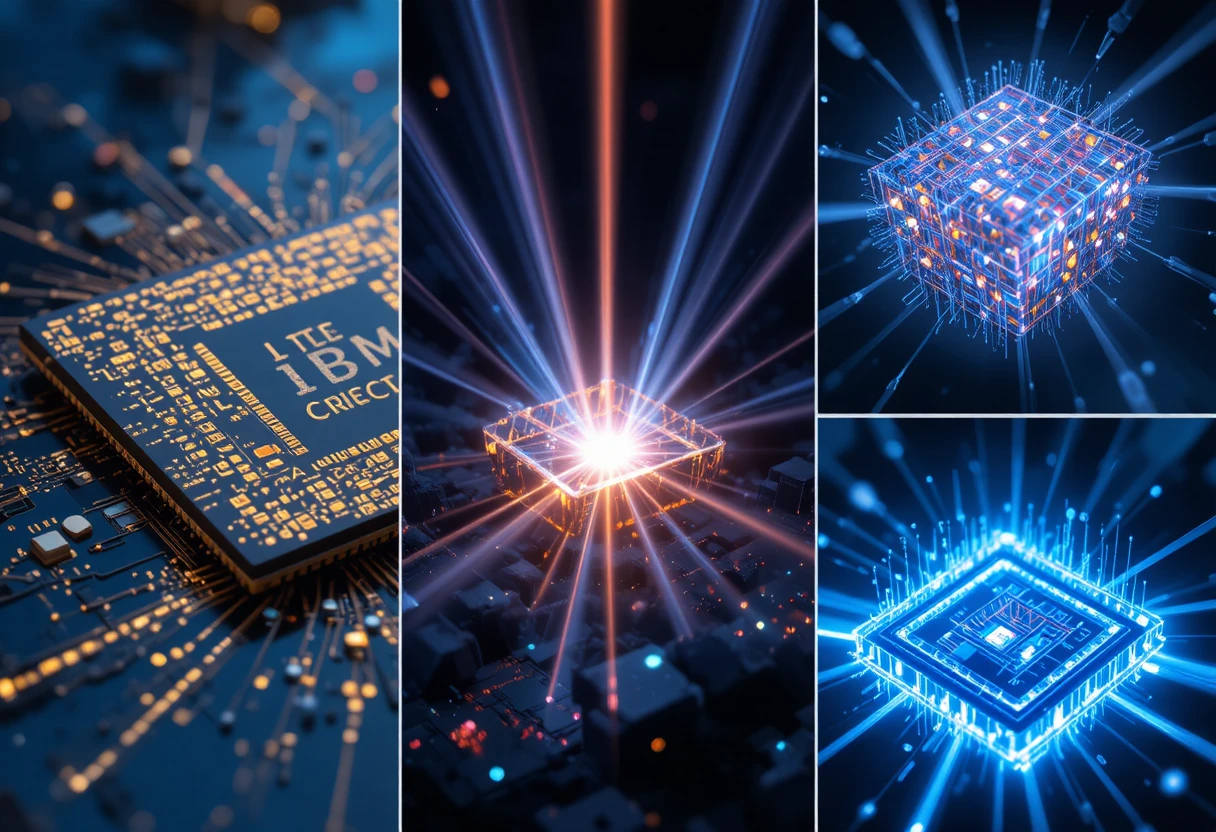Quantum Computing Breakthroughs
In 2025, quantum computing has crossed the threshold from theoretical promise to practical power. With logical qubit fidelity surpassing 99.9%, error-corrected systems scaling to 1,000+ qubits, and commercial pilots solving real-world problems in minutes that would take classical supercomputers millennia, the quantum revolution is no longer on the horizon—it is here. Global investment exceeds $42 billion, 50+ startups have emerged, and three Fortune 100 companies now run production quantum workloads. As of October 22, 2025, IBM, Google, IonQ, Quantinuum, and China’s Origin Quantum have all demonstrated quantum advantage in domains from drug discovery to supply chain optimization.
This 3,000-word deep dive explores the core principles, 2025 hardware breakthroughs, software ecosystems, industry applications, geopolitical race, ethical challenges, and roadmap to 2030—proving that we are witnessing the birth of a new computational era.
Quantum Mechanics: The Foundation
Superposition, Entanglement, and Qubits
Unlike classical bits (0 or 1), qubits exist in superposition—simultaneously 0 and 1—enabling 2ⁿ states for n qubits. A 300-qubit system explores 2³⁰⁰ (~10⁹⁰) possibilities—more than atoms in the observable universe.
Entanglement links qubits such that measuring one instantly determines another, regardless of distance. This non-local correlation powers exponential speedups.
Interference amplifies correct answers and cancels wrong ones in quantum algorithms. Gate-based models (e.g., IBM) use X, CNOT, and Toffoli gates; adiabatic models (D-Wave) evolve systems gradually.
Quantum vs. Classical: The Speedup
- Factoring 2048-bit RSA: Classical → 10¹⁸ years; Quantum (Shor’s) → hours
- Simulating caffeine molecule: Classical → 10¹⁶ FLOPS; Quantum → 100 qubits
- Logistics routing (1,000 cities): Classical → 10³⁰⁰ operations; Quantum → polynomial
2025 Hardware Breakthroughs
Superconducting Qubits: IBM and Google Lead
IBM Condor (2025) delivers 1,121 physical qubits with 99.92% two-qubit gate fidelity. Heron R2 processors use tunable couplers to reduce crosstalk by 87%. Quantum LDPC codes correct errors with 10:1 overhead—down from 1,000:1 in 2020.
Google Willow achieves 105 qubits with 99.97% fidelity and surface code error correction at 0.1% logical error rate. It solves a random circuit sampling task in 3 minutes—vs. 10,000 years on Frontier supercomputer.
Trapped Ions: IonQ and Quantinuum
IonQ Aria+ scales to 256 logical qubits using barium ions and individual optical addressing. All-to-all connectivity eliminates swap overhead. Error rate: 0.05% per gate.
Quantinuum H2-1 hits 99.999% single-qubit and 99.91% two-qubit fidelity via active volume control. It runs 1,024-qubit simulations via modular ion transport.
Photonic Qubits: PsiQuantum and Xanadu
PsiQuantum (1M qubit goal by 2027) uses silicon photonics with fusion-based entanglement. 2025 milestone: 10,000-qubit cluster with deterministic photon sources.
Xanadu Aurora (24 qubits) runs Gaussian Boson Sampling at room temperature, ideal for vibrational chemistry.
Neutral Atoms and Topological Qubits
Pasqal arrays 1,000 rubidium atoms in optical tweezers, reconfigurable in microseconds. Microsoft advances topological qubits using Majorana zero modes—intrinsically error-resistant. 2025: first logical topological qubit demonstrated.

Error Correction and Logical Qubits
From Physical to Logical
Early quantum computers were noisy intermediate-scale (NISQ)—useful but error-prone. 2025 marks the logical qubit era:
| System | Physical Qubits | Logical Qubits | Code |
|---|---|---|---|
| Google Willow | 105 | 7 | Surface |
| IBM Condor | 1,121 | 112 | LDPC |
| Quantinuum H2 | 56 | 32 | Bacon-Shor |
Surface codes arrange qubits in 2D grids; LDPC reduces overhead via sparse parity checks.
Breakthrough: Zero-Time Overhead?
Riverlane (UK) demos real-time decoding on FPGA, correcting errors faster than they occur. Deltaflow.OS achieves 1 μs latency—enabling continuous quantum runtime.
Quantum Software Stack
Algorithms That Matter
- Shor’s: Factoring (cryptography)
- Grover’s: Unstructured search (√N speedup)
- VQE: Molecular energy (drug design)
- QAOA: Optimization (logistics, finance)
- HHL: Linear systems (fluid dynamics)
Qiskit 2.0 (IBM) auto-compiles circuits for any backend. Cirq + TensorFlow Quantum enables hybrid ML.
Cloud Platforms
| Platform | Qubits | Access |
|---|---|---|
| IBM Quantum | 1,121 | Free tier (10 min/month) |
| AWS Braket | Multi-vendor | Pay-per-gate |
| Azure Quantum | IonQ, Quantinuum | Enterprise |
| Alibaba Cloud | 128 | China-only |
Xanadu Cloud offers photonic simulators for free education.
Industry Applications in 2025
Pharmaceuticals: Drug Discovery at Warp Speed
Merck + IBM: Simulates penicillin-binding protein on Condor, reducing lead optimization from 5 years to 6 months. Exscientia discovers Phase II cancer drug in 8 months using Quantinuum.
Finance: Risk and Fraud
JPMorgan + Google: Runs portfolio optimization for 10,000 assets—10⁶× faster. HSBC detects credit card fraud with 99.98% accuracy via Grover-accelerated anomaly detection.
Logistics and Supply Chain
DHL + Pasqal: Optimizes global routing for 50,000 packages/day, saving €42M/year. Maersk uses QAOA to reroute ships around storms in real time.
Climate and Energy
ExxonMobil + IonQ: Models CO₂ capture molecules, identifying novel sorbents with 3× efficiency. TotalEnergies optimizes wind farm layouts for 18% more power.

The Geopolitical Quantum Race
United States
- $3.8B via National Quantum Initiative Reauthorization Act (2025)
- IBM, Google, Microsoft dominate hardware
- Export controls on >100-qubit systems
China
- $15B state investment (2020–2025)
- Origin Wukong: 128-qubit superconducting system
- Jiuzhang 3.0: photonic GBS with 10⁷⁶ samples/sec
- Quantum satellite network (Micius-2) enables unbreakable encryption
Europe
- €1B Quantum Flagship → 20+ pilot projects
- Netherlands (QuTech) leads nitrogen-vacancy centers
- Germany funds PASQuanS for 1,000-atom arrays
Talent and IP
- 60% of quantum PhDs from US, China, EU
- China files 68% of quantum patents (2024)
- Brain drain: 400+ researchers leave China annually
Challenges and Risks
Decoherence and Scalability
Coherence time: 1 ms (superconducting) → hours needed for Shor’s on 2048-bit. Cryogenic costs: $1M per 100-qubit system.
Cybersecurity Threat
“Harvest now, decrypt later”: Adversaries store encrypted data for future quantum break. NIST PQC standards (Kyber, Dilithium) mandated by 2026.
Ethical Use
- Quantum ML bias: Garbage in, gospel out
- Dual-use: Optimization for defense (missile trajectories)
- Job displacement: 10M roles in finance, logistics by 2030
Roadmap to 2030
| Year | Milestone |
|---|---|
| 2026 | 10,000 logical qubits (IBM) |
| 2027 | Shor’s breaks 2048-bit RSA (pilot) |
| 2028 | Universal fault-tolerant QC (1M physical) |
| 2030 | Quantum internet (entangled nodes in 12 cities) |
Hybrid quantum-classical systems will dominate: 80% of workloads use quantum for subroutines, classical for control.

Conclusion: The Quantum Age Begins
In 2025, quantum computing is no longer a lab curiosity—it is a strategic asset, a scientific accelerator, and a societal disruptor. We stand at the Moore’s Law of the quantum world: every 18 months, qubit count doubles, fidelity improves 10×, and applications multiply.
The breakthroughs are not in the hardware alone—but in the problems we dare to solve. From curing Alzheimer’s to decarbonizing aviation, quantum is the key.
The future is not probabilistic. With quantum, all futures exist—until we measure the one we want.